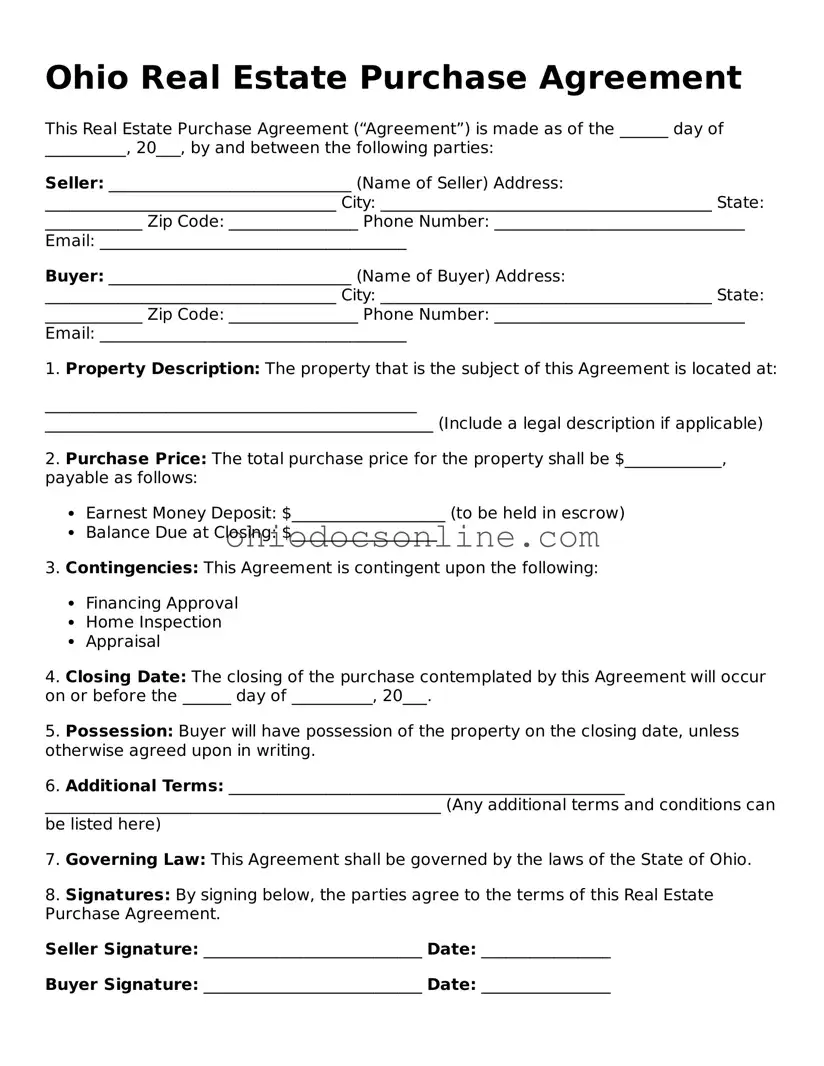Printable Real Estate Purchase Agreement Template for Ohio
The Ohio Real Estate Purchase Agreement form serves as a crucial document in the process of buying or selling property in Ohio. This legally binding agreement outlines the terms and conditions agreed upon by both the buyer and the seller. Understanding its components can facilitate a smoother transaction and help prevent disputes.
Open Editor
